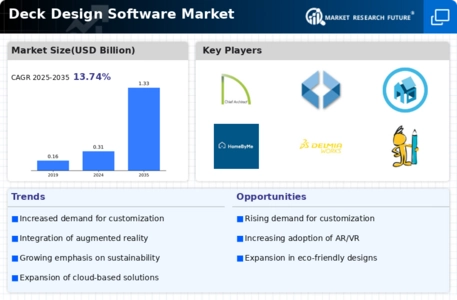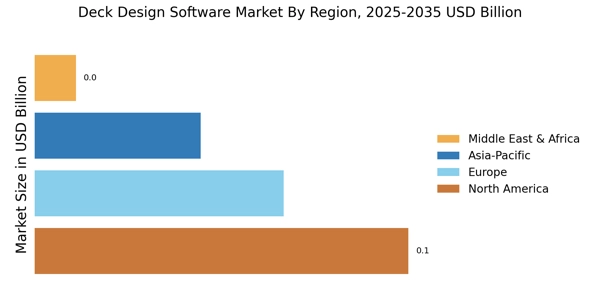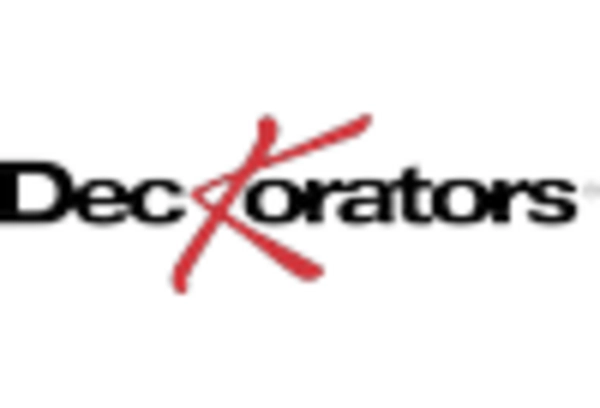Increased DIY Culture
The Deck Design Software Market Industry is benefiting from the rise of the do-it-yourself (DIY) culture. More homeowners are opting to undertake their own home improvement projects, including deck construction and design. This trend is fueled by the availability of user-friendly design software that simplifies the planning and execution of deck projects. According to recent surveys, approximately 60% of homeowners express interest in DIY projects, with deck building being a popular choice. As a result, the Deck Design Software Market Industry is likely to see an influx of new users seeking tools that empower them to create their own outdoor spaces, thereby driving market growth.
Sustainability Trends in Construction
Sustainability trends are increasingly shaping the Deck Design Software Market Industry. As environmental concerns gain prominence, consumers are more inclined to choose eco-friendly materials and designs for their decks. This shift is prompting software developers to incorporate features that facilitate sustainable design practices, such as material selection tools that highlight environmentally friendly options. The market for sustainable building materials is projected to grow significantly, with a compound annual growth rate of around 10%. Consequently, the Deck Design Software Market Industry is likely to adapt to these trends, offering solutions that align with the growing demand for sustainable construction practices.
Expansion of the Construction Industry
The expansion of the construction industry is a key driver for the Deck Design Software Market Industry. As urbanization continues to rise, there is an increasing need for residential and commercial construction projects, which often include outdoor spaces such as decks. The construction sector is projected to grow at a rate of approximately 5% annually, creating a favorable environment for deck design software adoption. Builders and contractors are increasingly recognizing the value of design software in streamlining project workflows and enhancing client satisfaction. This growth in the construction industry is expected to positively impact the Deck Design Software Market Industry, as more professionals seek efficient design solutions.
Rising Demand for Outdoor Living Spaces
The Deck Design Software Market Industry is experiencing a notable surge in demand for outdoor living spaces. Homeowners increasingly seek to enhance their properties with functional and aesthetically pleasing decks. This trend is driven by a growing appreciation for outdoor leisure and entertainment, which has led to a projected market growth rate of approximately 8% annually. As consumers prioritize outdoor aesthetics, the need for sophisticated design tools becomes paramount. Deck design software enables users to visualize their projects, select materials, and customize layouts, thereby facilitating informed decision-making. This rising demand for outdoor living spaces is likely to propel the Deck Design Software Market Industry forward, as more individuals invest in their homes and outdoor environments.
Technological Advancements in Design Tools
Technological advancements are significantly influencing the Deck Design Software Market Industry. Innovations such as 3D modeling, virtual reality, and artificial intelligence are enhancing the capabilities of design software. These technologies allow users to create highly detailed and realistic representations of their deck designs, improving the overall user experience. For instance, the integration of AI can provide design suggestions based on user preferences and site conditions, streamlining the design process. As these technologies continue to evolve, they are expected to attract more users to the Deck Design Software Market Industry, potentially increasing market penetration and driving revenue growth.


















Leave a Comment